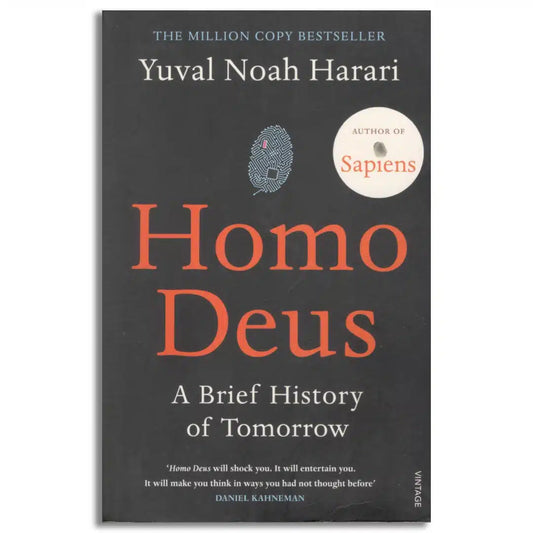2666 [Hardcover]
2666 [Hardcover]
Couldn't load pickup availability
Santa Teresa, on the Mexico–US border, is an urban sprawl that draws in lost souls. Among them are three academics on the trail of a reclusive German author; a New York reporter on his first Mexican assignment; a widowed philosopher; and a police detective in love with an elusive older woman. But there is darker side still to the town. It is an emblem of corruption, violence and decadence, and one from which, over the course of a decade, hundreds of women have mysteriously, often brutally, disappeared.
Told in five parts, 2666 is the epic novel that defines one of Latin America’s greatest writers and his unique vision of the modern world. Conceived on an astonishing scale, and – in the last years of Roberto Bolaño’s life – with burning, visionary commitment, it has been greeted across Europe and Latin America as his masterpiece, surpassing even his previous work in inventiveness, imagination, beauty and scope.
`Vital, thrilling and life-enhancing. Readers who haves snacked on a writer such as Haruki Murakami will feast on Roberto Bolaño’ Sunday Times
`A landmark in what’s possible for the novel. Bolaño has proven it can do anything’ New York Times
`Startling anarchic grace. Bolaño has come close to re-imagining the novel’ Independent
`A visionary exploration of life and literature’ Guardian
Santa Teresa, on the Mexico–US border: an urban sprawl that draws lost souls to it like a vortex. Convicts and academics find themselves here, as does an American sportswriter, a teenage student with her widowed father, and a reclusive, `missing’ author. But there is a darker side to the town. As in the real town of Juárez, on which Santa Teresa is based, girls and women are disappearing at an alarming rate . . .
As 2666 progresses, as the sense of conspiracy grows, as the shadow of the apocalypse draws closer, Santa Teresa becomes an emblem of the corruption, violence and decadence of twentieth-century European history.
Written on an astonishing scale, and – in the last years of Roberto Bolaño’s life – with burning, visionary commitment, 2666 has been greeted across Europe and Latin America as the writer’s masterpiece, surpassing even his previous work in imagination, beauty, and scope.
`One of those strange, exquisite, and astonishing experiences that literature offers us only once in a very long time’ El País
`Bolaño’s masterwork. An often shockingly raunchy and violent tour de force (though the phrase seems hardly adequate to describe the novel’s narrative velocity, polyphonic range, inventiveness, and bravery)’ New York Review of Books
`Not just the great Spanish-language novel of this decade, but one of the cornerstones that define an entire literature. 2666 is a magisterial and inimitable’ La Vanguardia
`Endlessly in love with people and books, Bolaño’s last novel ranges over the world and history’ Le Monde des Livres
`A work of genius: the work of a master whose voice has all the authority and seeming effortlessness that we associate with the great classics of the ages’ Blanco y Negro
`Bolaño makes you feel changed for having read him; he adjusts your angle of view on the world’ Guardian
Product features
Product features
✅ 100% Original Books
Every book is authentic and sourced responsibly—no pirated or photocopied material.
🔍 32-Point Quality Check
Each book undergoes a detailed inspection for pages, cover, binding, and readability.
📚 Wide Range of Genres
From fiction and self-help to academic and non-fiction—something for every reader.
💸 Budget-Friendly Prices
Get great books at unbeatable prices—perfect for students, readers, and collectors.
✨ Pre-Loved, Not Worn Out
Books are gently used, clean, and in good readable condition.
🌱 Eco-Friendly Choice
Buying used books helps reduce waste and promotes sustainable reading.
🚚 Pan-India Shipping
Fast, reliable delivery to every corner of India, with tracking and support.
💬 Customer Support
Responsive customer service to help with any order or book-related query.
Materials and care
Materials and care
📚 Materials
– Gently used, original print books.
– No photocopies or pirated prints—100% original.
– Checked for legibility and intact spines.
– Some books may contain light pencil notes or highlights.
🧼 Care Instructions
– Keep books away from moisture and direct sunlight.
– Use a bookmark to maintain page quality.
– Use a soft, dry cloth to wipe dust from covers.
– Preserve the pages and cover from smudges or stains.
– Prevent warping by storing books upright on shelves.
Merchandising tips
Merchandising tips
🛍️ Tips for Buying Used Books on BestofUsedBooks.com
✅ Check the Book Condition
Look for labels like “Like New,” “Good,” or “Readable” to know exactly what to expect before buying.
📚 Explore Curated Collections
Browse through themed bundles like “Top Self-Help Reads” or “Fiction Under ₹299”—perfect for discovering hidden gems.
💡 Read Descriptions Carefully
Each product page lists key details like page quality, binding condition, and possible markings—take a quick moment to review.
🎁 Buy More, Save More
Take advantage of bundle deals and discounted packs to build your library while saving big.
🌱 Choose Sustainability
Buying pre-loved books is a smart, eco-friendly choice—reduce waste and support circular reading!
🔍 Use Search & Filters
Use filters by genre, author, or condition to find exactly what you're looking for, faster.
📦 Track Your Order
Once placed, every order comes with trackable shipping—so you always know where your next read is!
Share
- 32 Points Quality Check
- 100% Original Products
- 1.2 Million + Happy Customers
Other Best Sellers
-
The oath of the vayuputras by AMISH
4.29 / 5.0
(7) 7 total reviews
Regular price Rs. 150.00Regular priceUnit price / perRs. 599.00Sale price Rs. 150.00Sale -
Half girlfriend by chetan bhagat
5.0 / 5.0
(5) 5 total reviews
Regular price Rs. 99.00Regular priceUnit price / perRs. 176.00Sale price Rs. 99.00Sale -
Homo Deus by Yuval Noah Harari
3.33 / 5.0
(3) 3 total reviews
Regular price Rs. 299.00Regular priceUnit price / perRs. 599.00Sale price Rs. 299.00Sale -
Corporate chanakya by Radhakrishnan Pillai
4.67 / 5.0
(3) 3 total reviews
Regular price Rs. 199.00Regular priceUnit price / perRs. 325.00Sale price Rs. 199.00Sale -
Gone girl by Gillian Flynn
4.33 / 5.0
(3) 3 total reviews
Regular price Rs. 150.00Regular priceUnit price / perRs. 399.00Sale price Rs. 150.00Sale -
The alchemist by Paulo coelho
5.0 / 5.0
(1) 1 total reviews
Regular price Rs. 150.00Regular priceUnit price / perRs. 299.00Sale price Rs. 150.00Sale -
The kite runner by Khaled Hosseini
Regular price Rs. 150.00Regular priceUnit price / perRs. 499.00Sale price Rs. 150.00Sale -
Eleven minutes by paulo coelho
5.0 / 5.0
(1) 1 total reviews
Regular price Rs. 150.00Regular priceUnit price / perRs. 350.00Sale price Rs. 150.00Sale










![2666 [Hardcover]](http://bestofusedbooks.com/cdn/shop/products/2666Hardcover.jpg?v=1643461043&width=1445)

